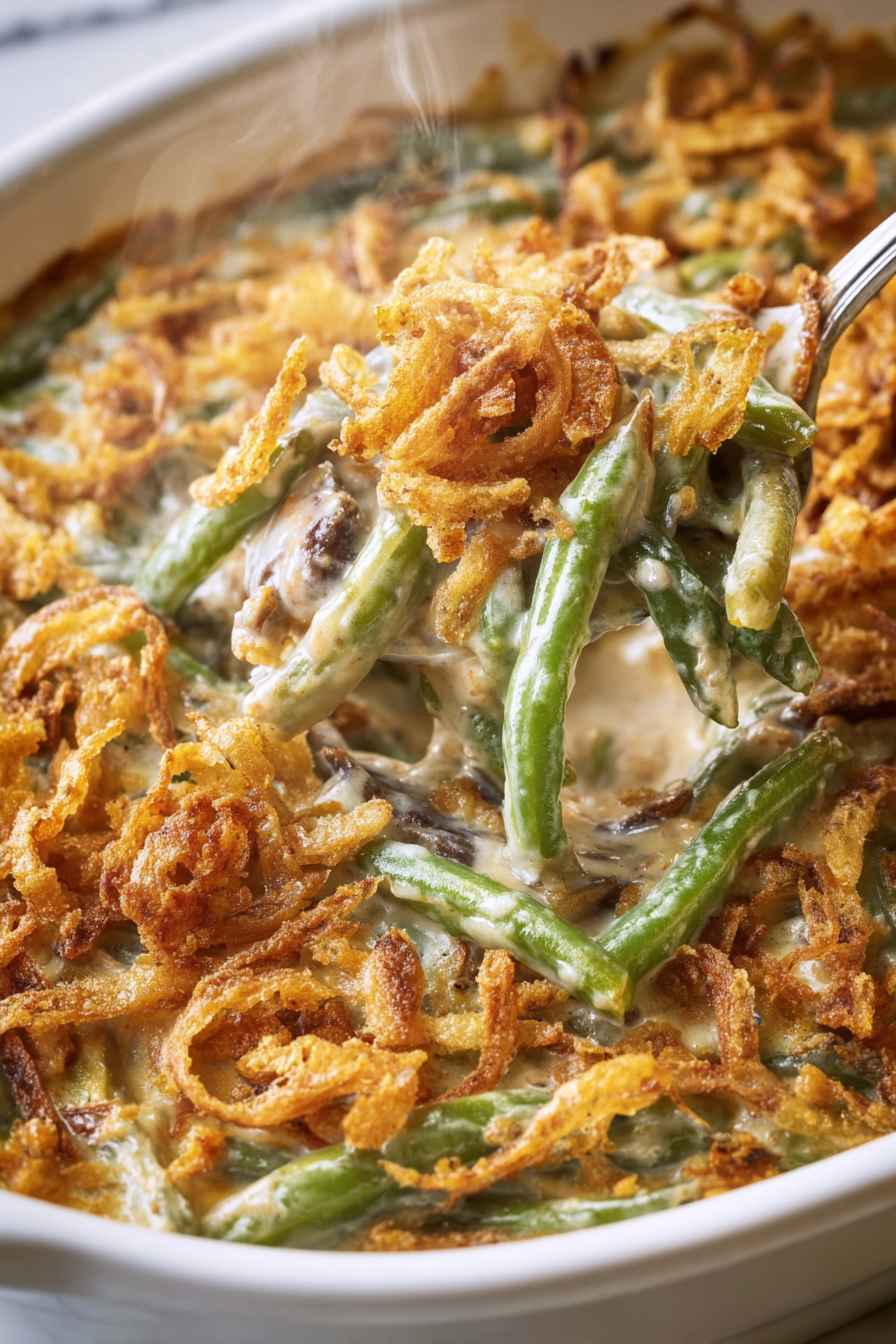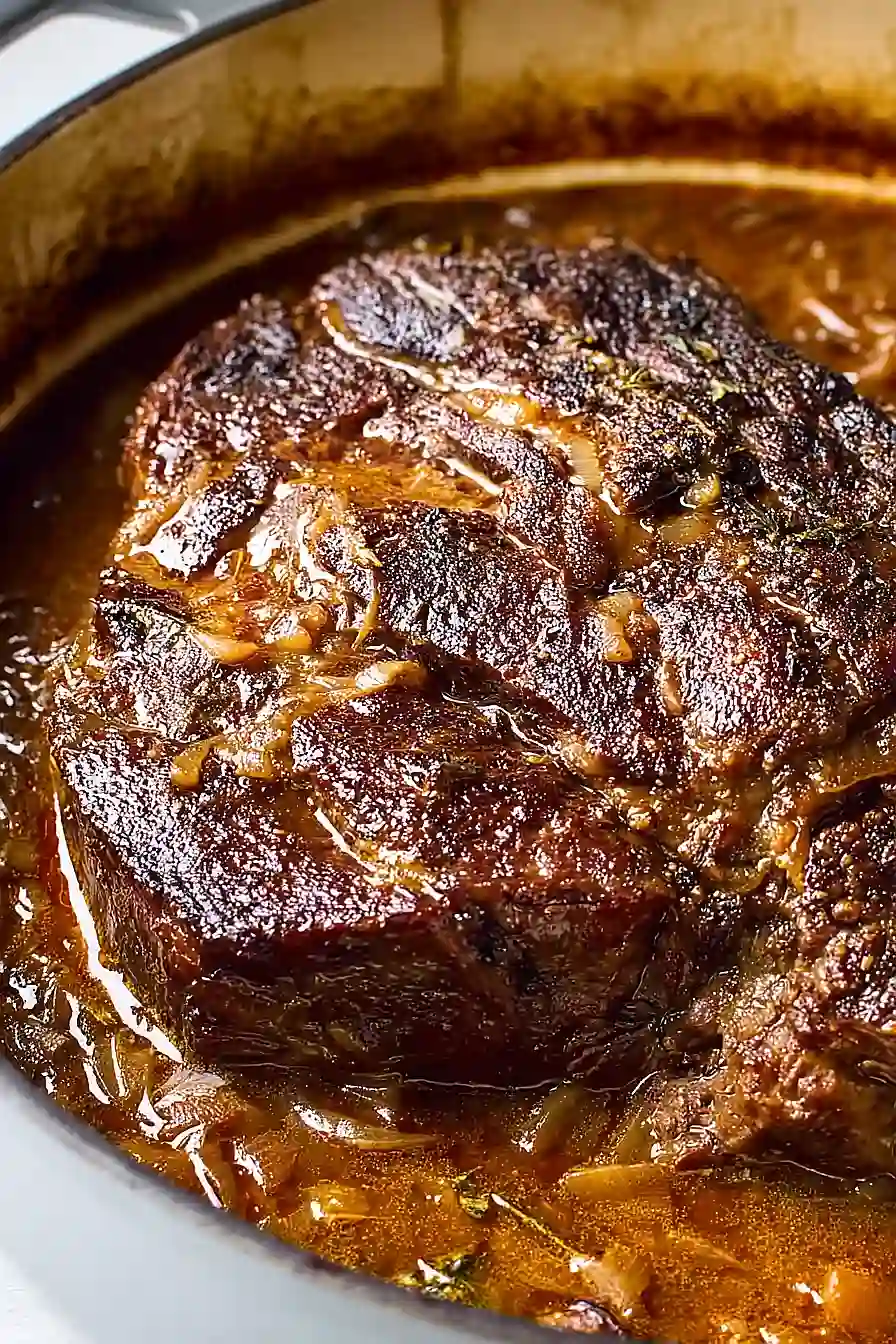Making real Spaghetti Carbonara at home might seem intimidating, especially when you’ve heard all those stories about eggs scrambling or the sauce breaking at the last minute. Trust me, I get it – the thought of messing up such a classic Italian dish can make anyone nervous, and it doesn’t help that there are so many different versions floating around online.
The good news is that authentic carbonara is actually much simpler than you think. With just five ingredients and the right technique, you can master this creamy, satisfying pasta dish that’s perfect for busy weeknights when you want something special without spending hours in the kitchen.
Why You’ll Love This Spaghetti Carbonara
- Simple ingredients – With just six basic ingredients, this classic Roman dish proves that you don’t need a long shopping list to create something amazing.
- Quick weeknight dinner – Ready in just 30-40 minutes, this pasta is perfect when you want something satisfying without spending hours in the kitchen.
- Authentic Italian recipe – This traditional carbonara recipe stays true to its Roman roots, giving you a taste of real Italian cooking right at home.
- Creamy without cream – The silky, rich sauce comes from just eggs and cheese – no heavy cream needed – making it lighter than you’d expect while still being incredibly satisfying.
- Impressive yet easy – Your family and guests will think you’re a culinary genius, but the technique is actually quite simple once you get the hang of it.
What Kind of Pasta Should I Use?
For authentic carbonara, spaghetti is the traditional choice and works perfectly with the creamy egg and cheese sauce. You want to use good quality dried pasta made from durum wheat, which will hold its shape and have the right texture to grab onto that silky sauce. If you can’t find spaghetti, other long pasta shapes like linguine or bucatini work well too. Fresh pasta can be used, but it cooks much faster, so keep a close eye on it and adjust your timing accordingly. The key is to cook your pasta just until al dente since it will continue cooking slightly when you toss it with the hot guanciale and sauce.
Options for Substitutions
While carbonara is a traditional dish with specific ingredients, here are some swaps you can make if needed:
- Guanciale: If you can’t find guanciale, pancetta is your next best bet, followed by thick-cut bacon. The flavor will be slightly different, but still delicious. Cook it until crispy and use the rendered fat in the sauce.
- Pecorino Romano cheese: Parmesan or Grana Padano work well as substitutes. You can even do a mix of half Pecorino and half Parmesan if you want to balance the sharpness.
- Egg yolks: Some recipes use whole eggs instead of just yolks – you can use 2-3 whole eggs if that’s what you have. The sauce will be slightly less rich but still creamy.
- Spaghetti: Long pasta like linguine, fettuccine, or even bucatini work great. The key is having enough surface area for the sauce to cling to.
- Black pepper: Fresh cracked black pepper is really important here – don’t skip it! If you only have pre-ground, use a bit less as it can be more potent.
Watch Out for These Mistakes While Cooking
The biggest mistake people make with carbonara is adding the egg mixture to pasta that’s too hot, which will scramble your eggs instead of creating that creamy sauce you’re after – always let the pasta cool for about a minute after draining and add some reserved pasta water to lower the temperature.
Another common error is rushing the guanciale, since properly rendered fat takes time and patience – cook it slowly over medium-low heat until it’s crispy and golden, as this rendered fat becomes part of your sauce.
Don’t forget to save at least a cup of starchy pasta water before draining, because this liquid gold helps bind everything together and creates the silky texture that makes carbonara special.
Finally, never add cream or any dairy other than cheese – authentic carbonara gets its creaminess from the emulsion of eggs, cheese, pasta water, and rendered fat working together.
What to Serve With Spaghetti Carbonara?
Since carbonara is already pretty rich and creamy, I like to keep the sides simple and fresh to balance out all that cheesy goodness. A crisp Caesar salad or mixed greens with a light lemon vinaigrette works perfectly to cut through the richness of the eggs and cheese. Garlic bread is always a crowd-pleaser too, especially if you want something to help scoop up any extra sauce from your plate. For wine lovers, a nice glass of Italian white wine like Pinot Grigio pairs beautifully with the salty guanciale and sharp Pecorino Romano.
Storage Instructions
Refrigerate: Leftover carbonara can be stored in the fridge for up to 2 days in an airtight container. I’ll be honest though – it’s never quite the same as when it’s fresh since the creamy sauce can separate a bit. It’s still tasty, but carbonara is definitely one of those dishes that’s best enjoyed right away.
Reheat: To warm up your leftover carbonara, use the lowest heat setting on your stove and add a splash of pasta water or regular water to help bring the sauce back together. Stir gently and constantly to prevent the eggs from scrambling. You can also try the microwave on very low power, stirring every 30 seconds.
Make Ahead Tip: While carbonara doesn’t store well once made, you can prep some components ahead of time. Cook and chop your guanciale earlier in the day, and have your cheese grated and egg yolks separated. This way, you can whip up fresh carbonara in just minutes when you’re ready to eat!
| Preparation Time | 15-20 minutes |
| Cooking Time | 15-20 minutes |
| Total Time | 30-40 minutes |
| Level of Difficulty | Medium |
Estimated Nutrition
Estimated nutrition for the whole recipe (without optional ingredients):
- Calories: 2200-2400
- Protein: 95-110 g
- Fat: 85-100 g
- Carbohydrates: 265-285 g
Ingredients
For the pasta:
- 1 lb spaghetti (I use Barilla or De Cecco)
- Salt, to taste
For the sauce:
- 4 egg yolks (room temperature, for creamiest sauce)
- Freshly ground black pepper, to taste (freshly ground preferred for more flavor)
- 7 oz pecorino romano cheese, grated (freshly grated preferred for better melting)
- 5 oz guanciale, diced into 1/4-inch pieces (traditional Italian cured pork jowl, or use pancetta if unavailable)
For serving:
- Additional cracked black pepper
- Extra pecorino romano cheese, grated
Step 1: Render the Guanciale and Build the Fat Base
- 5 oz guanciale, diced into 1/4-inch pieces
- Salt, to taste
- Freshly ground black pepper, to taste
Dice the guanciale into 1/4-inch pieces and place in a large pan over medium heat.
Cook for 5-7 minutes, stirring occasionally, until the pieces are crispy and golden with rendered fat pooling in the pan.
The fat is essential to the sauce—it carries flavor and helps create that silky texture carbonara is known for.
Once crispy, season lightly with salt and freshly ground black pepper.
Remove from heat and set aside, keeping the rendered fat in the pan.
Step 2: Cook the Pasta to Al Dente
- 1 lb spaghetti
- Salt, to taste
- Reserved pasta water
Bring a large pot of salted water to a rolling boil—the water should taste like the sea.
Add spaghetti and cook until al dente, following the package instructions (usually 9-11 minutes).
While the pasta cooks, reserve 1 cup of starchy pasta water in a separate container before draining.
I always reserve the pasta water in a measuring cup so I know exactly how much I’m adding back—it gives you precise control over the sauce consistency.
Step 3: Prepare the Egg and Cheese Mixture
- 4 egg yolks
- 7 oz pecorino romano cheese, grated
- Freshly ground black pepper, to taste
While the pasta cooks, combine the room-temperature egg yolks, freshly grated pecorino romano cheese, and freshly ground black pepper in a bowl.
Whisk together until you have a smooth, creamy mixture that looks like a thin paste.
The room-temperature eggs are crucial—cold eggs won’t emulsify properly with the hot pasta.
I grate the cheese fresh rather than using pre-grated because it melts more smoothly into the sauce without the anti-caking agents that interfere with the texture.
Step 4: Combine Pasta with Guanciale Off Heat
- Drained spaghetti from Step 2
- Guanciale and rendered fat from Step 1
This is the most critical step: ensure your guanciale pan is off the heat, then add the drained spaghetti directly to the pan with the rendered fat and crispy pieces.
Toss constantly for about 1-2 minutes to coat the pasta thoroughly in the fat and allow it to cool slightly—this prevents the eggs from scrambling when you add them.
The pasta should feel hot but not actively cooking.
Step 5: Create the Creamy Sauce and Finish
- Egg and cheese mixture from Step 3
- Pasta with guanciale from Step 4
- Reserved pasta water
Quickly pour the egg and cheese mixture from Step 3 into the pasta off the heat, stirring constantly and vigorously for 30-45 seconds.
The residual heat will gently cook the eggs into a creamy, luxurious sauce without scrambling them.
If the sauce seems too thick or sticky, add reserved pasta water one tablespoon at a time while stirring until you reach a silky, pourable consistency that coats the pasta.
The starch in the pasta water emulsifies with the fat and eggs to create that signature creamy texture.
Step 6: Plate and Serve Immediately
- Finished carbonara from Step 5
- Extra pecorino romano cheese, grated
- Additional cracked black pepper
Divide the carbonara among serving bowls or plates immediately—this dish cools quickly and the sauce begins to set once it stops moving.
Top each portion with a generous handful of freshly grated pecorino romano cheese and a generous crack of freshly ground black pepper.
Serve right away while the pasta is hot and the sauce is still silky.







